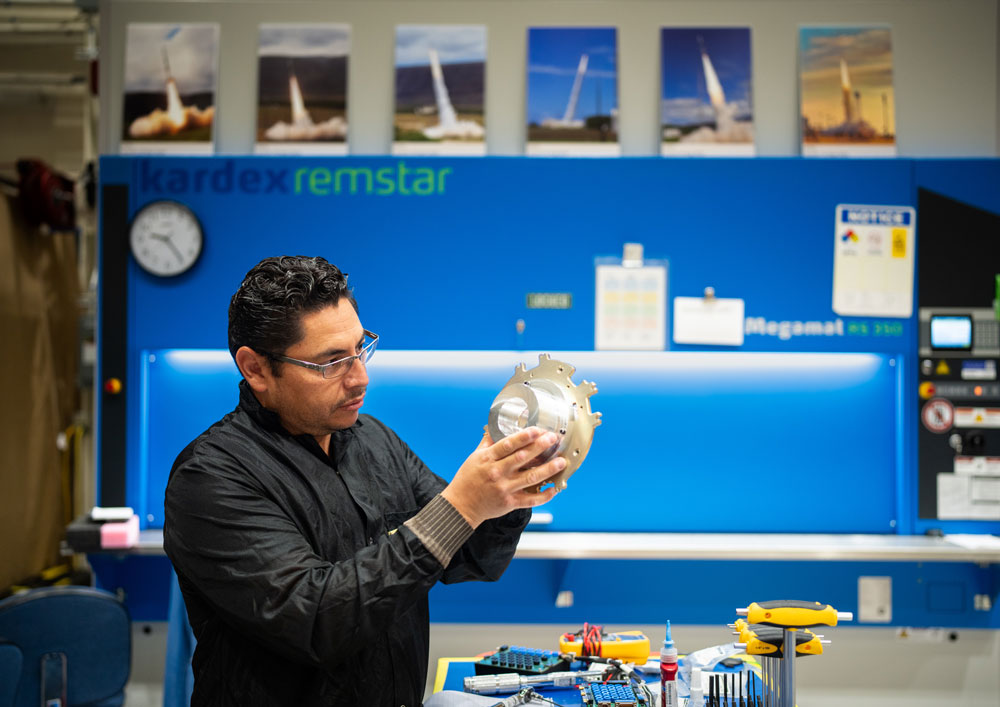
Sandia answered the nation’s call with an impressive feat: developing an experimental reentry vehicle within a tight 24-month deadline for a critical test. A reentry vehicle is designed to safeguard a warhead during atmospheric reentry. Sandia completed the Enzo demonstrator and had it ready to ship in time to meet the test’s deadline.
“For Enzo, the team had a very clear focus that we had to deliver in 24 months,” said Kelsey Forsberg, the lead for the Enzo flight demonstrator project. “We had a team that already had flight test experience.”
The team responsible for Enzo also concurrently worked on NNSA’s High Operational Tempo Shot sounding rocket program. HOT Shot collects data for aerospace research and future weapon designs for the stockpile. Kelsey said the experience gained from the program helped the team rise to the challenge for Enzo.
“We had capability in terms of people, technical experience and lab space. We were starting in a good place from experience and the team was really clicking. It was very challenging for the first seven months or so because we also had a HOT Shot flight while we were in the initial design stages for Enzo,” Kelsey said.
Enzo is crucial in providing weapons technology for a flight test. Kelsey said a priority was having the test unit completed on time, without sacrificing safety. “We’re confident, based on the analysis and test results, it’s going to be safe,” Kelsey said, adding that the bulk of the verification focused on the unit’s safety. About 10 Sandians were part of the core team working on Enzo, with an estimated 100 to 150 additional Sandians contributing to the success of the two-year project. “The core team was small, but it took the Sandia village to make the project successful,” Kelsey said.
In addition to safety considerations, other objectives included documenting valuable lessons learned and establishing strong relationships with key stakeholders.
Originally starting as a white paper without any models or hardware, the project comprised nine experiments that involved collaboration with others, such as NNSA and Los Alamos National Laboratory.
“There are relationships built on having executed something, having gone through this process together. I’m excited to see how that leads to tangible action in the future,” Kelsey said.
Those relationships continued even after project completion. In June, Sandia hosted a poster session with Los Alamos, which allowed employees from both labs to share and explain their contributions to Enzo with Sandia’s workforce.
“Enzo has been a highlight of my career. To see the team rise to the challenge and endure, and to see Enzo come to fruition is amazing,” Kelsey said.
What is a demonstrator?
Sandia has several demonstrator programs that help test technology components early, in as close to a real environment as possible.
“Demonstrators are important because they provide system context and environmental testing to help understand risks early in a program,” said Hae-Jung Murphy, a senior manager in Sandia’s nuclear deterrence modernization and future systems program. Identifying risks early can help reduce uncertainties and costly delays.
Demonstrator programs also provide employees with specialized training opportunities to adapt and deliver quickly. “We need demonstrators to advance component design and reduce risk for actual weapons systems,” Hae-Jung said.